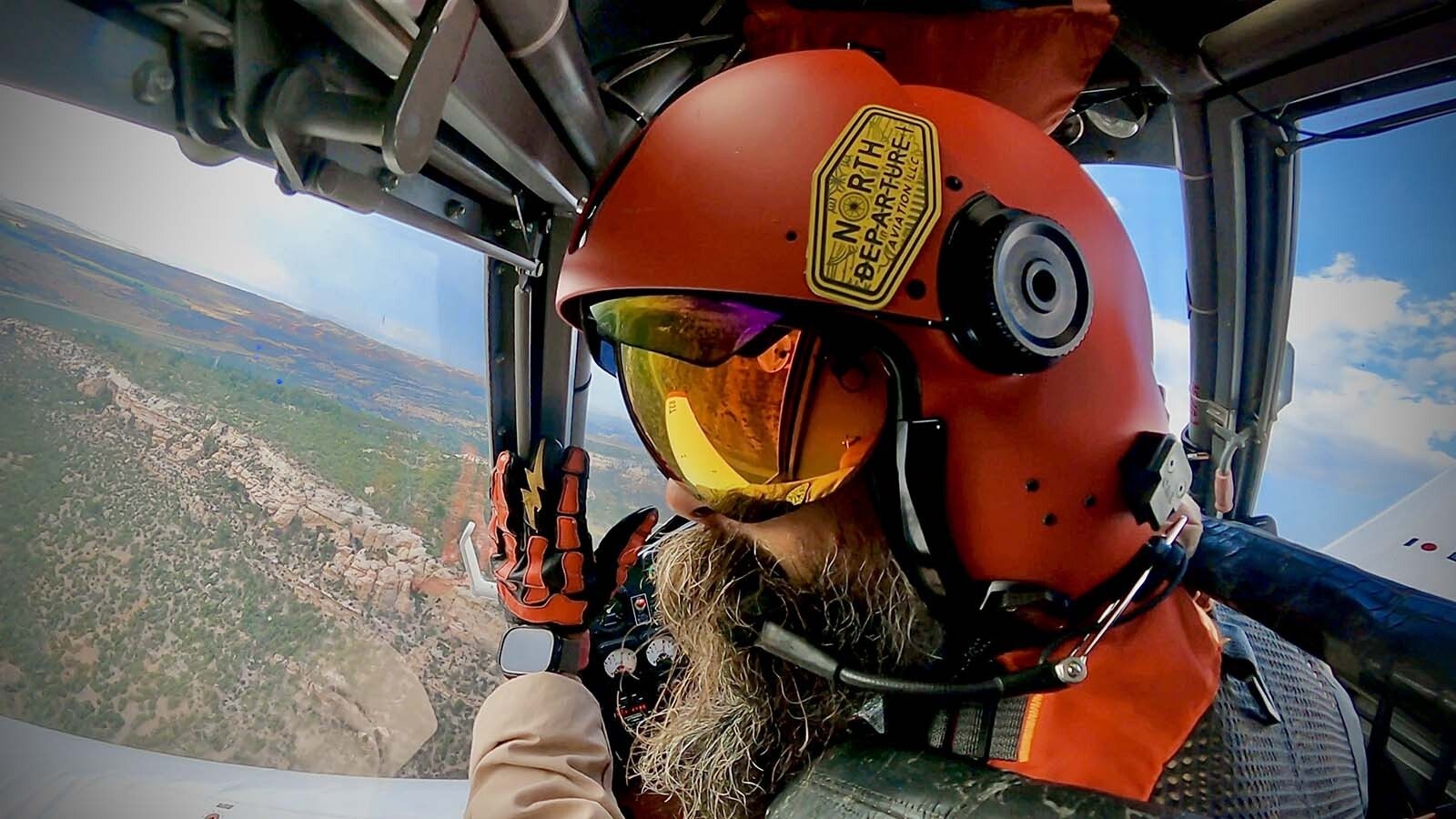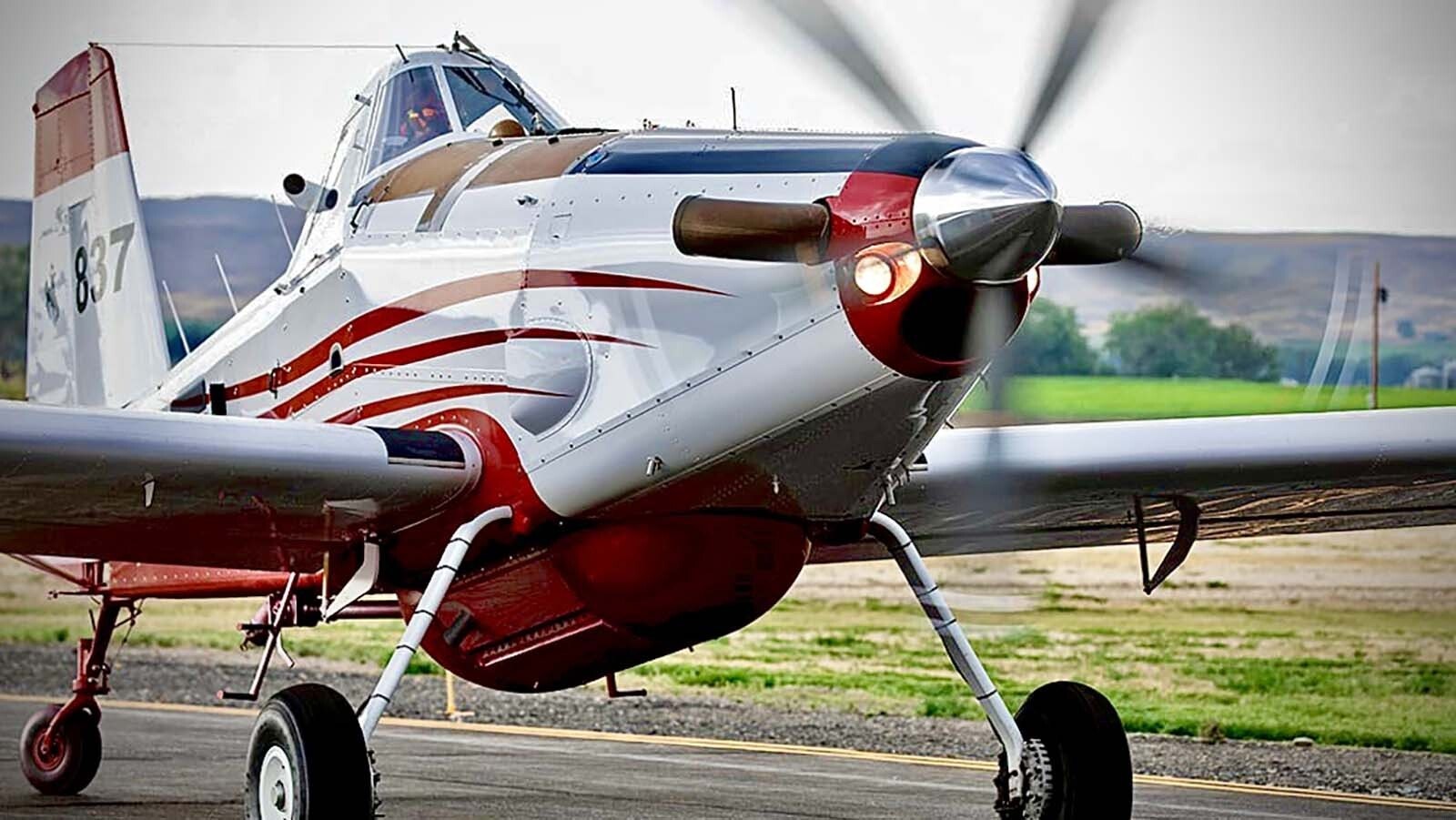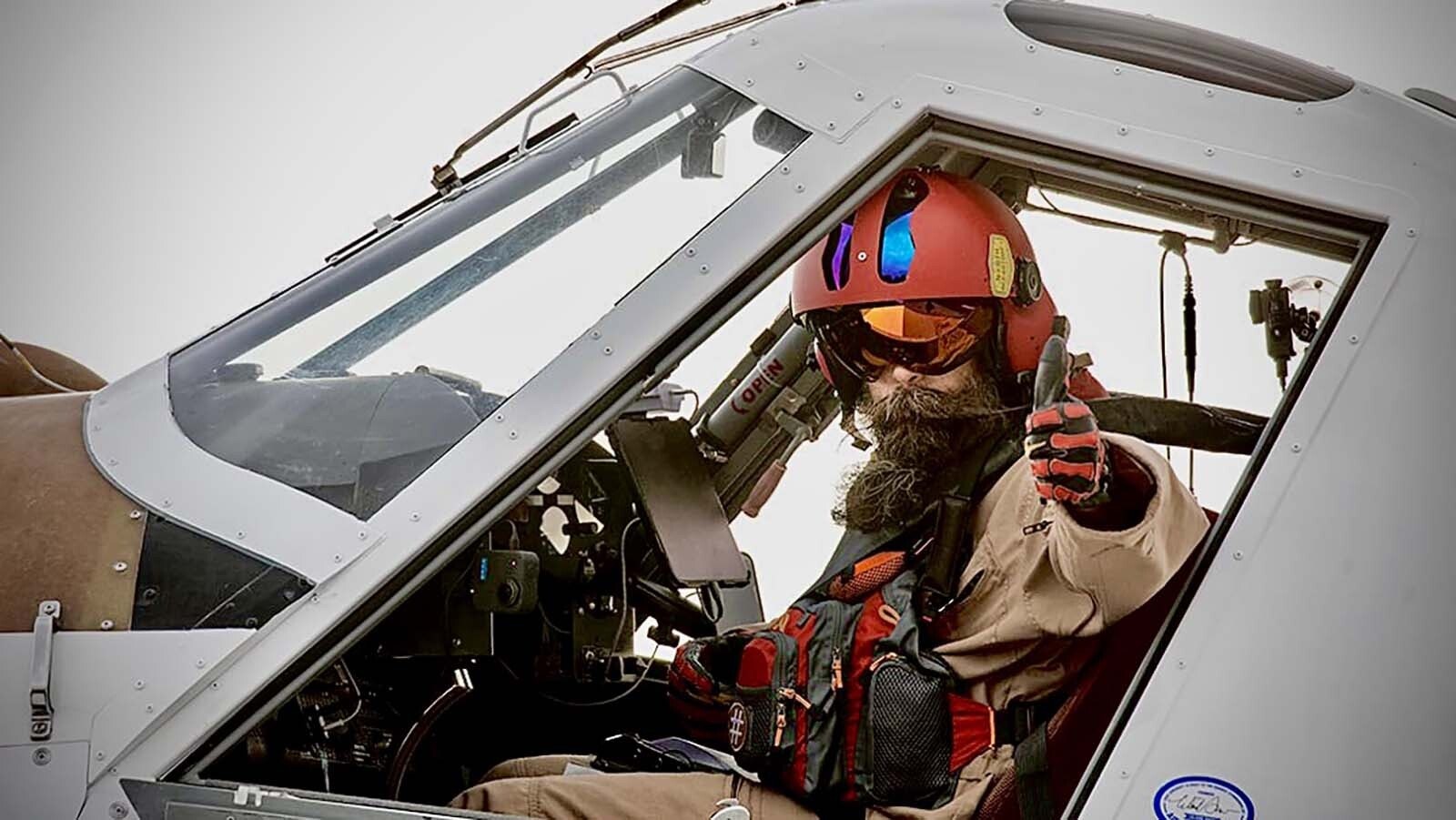As wildfire season is sweeping across Wyoming and surrounding states, aerial attacks are crucial in stopping the advance of flames that have devastated huge tracts of land, from rugged forests to critical forage for cattle.
These experienced pilots are supporting the hundreds of wildland firefighters on the ground and stand ready for up to 12 hours a day.
“I've been on a total of 20 different fires in Wyoming,” pilot Nick Dew told Cowboy State Daily about the 2025 fire season so far. “Some of those were spread over multiple days. I've had 61 separate drops, and I've dropped 38,358 gallons of retardant on those fires.”
Dew just moved his single engine air tanker (SEAT) base from the Worland Municipal Airport to a newly opened base in Gillette.
It is his first year fighting fires after a long career flying for the Air Force. He flies an Air Tractor AT-802A with the callsign “Tanker 837.”
Even with 6,000 flight hours behind him, Dew said fighting wildfires from the air is difficult, challenging and takes extra training for to get qualified.
Flying The Air Tractor
“I've got to make sure she doesn't hear me, because this airplane is the most challenging airplane I've ever had to land in my life,” Dew said. “Over my Air Force career, I was fortunate enough to fly 40 different airplane types, which is not the norm.
“Out of all of those airplanes, this one is the most stick and rudder physical flying that I've ever done in my life.”
He said the single-engine propeller Air Tractor has a robust airframe and is built to land hard. It’s meant to land on grass strips and dirt roads and withstand a lot of abuse.
“When you have an airplane that's built so strong, it's very rigid,” he said. “Every time you touch down the airplane kind of wants to bump, bounce and skitter around and you have to be very, very diligent. You can’t ever relax ever with this airplane until you're back in the chocks.”
He said that every pound of weight must be eliminated so there is no autopilot on the Air Tractor, which adds to the challenge of piloting it.
“For every pound of weight you have on the airplanes, that's a pound of retardant that you have to leave behind,” he said. “It's just it's tremendously rewarding to take off and land every day to be over a fire, to put the retardant right where the ground crew wants it and know that you're doing it all yourself with zero automation to help you out.”

Back To Flight School
Dew was on a path to become a commercial airline pilot when 9/11 happened.
He joined the Air Force instead, and retired last year at the rank of lieutenant colonel. Now 47 years old, Dew said he was away from his family for a lot of milestones, like his 21st wedding anniversary and birthdays.
He wanted to still serve his country and decided to fight fires stationed as a SEAT pilot.
Dew said that the minimum entry requirement to get into the industry is 1,500 total hours of flight time. This includes 200 hours of low-level time and 100 to 200 hours of mountain time.
That’s important for wildfires, which require flying over mountainous terrain as well as grasslands. What all the flights have in common is running low to the ground for precise drops of water and fire-retardant slurry.
“Most people in the industry come from an agricultural background, so they've been crop dusting for a number of years,” Dew said. “I didn't have low-level dispensing time, so the training program that I was put through was called AMOC, and that's an acronym that stands for alternate means of compliance.”
He was required to put in an additional 50 hours of training and perform a certain number of drops with aerial supervision before he qualified to become a SEAT pilot.
Fell In Love With Wyoming
He said it was his military background and AMOC training that helped him enter this new field. The job also means a long season away from family once again.
“I left home at the end of May to go to the company headquarters and get a couple of drops in and get knocked the rust knocked off of the airplane,” Dew said. “I've been gone for almost three months, and I hope to be home sometime in the first half of September.”
It’s been tough to be away, but he finds the work gratifying and has fallen in love with Wyoming in the process of defending the Cowboy State from wildfires.
He wasn’t expecting to be stationed in the state for the duration of the fire season and has found it to be an unexpectedly rewarding experience.
“This state is just as beautiful as it gets,” he said. “You can't drive more than an hour without just having your jaw drop and marveling at the geological features or the wildlife or just the sunsets or the sunrises. It's crazy.”

The Air Attack
Dew’s main job as an aerial firefighter is to support the wildland firefighters on the ground.
“The incident commander on the ground is the one who makes the determination of what their priorities are, and based on their priorities, that determines where we drop,” Dew said.
As he navigates Tanker 837, Dew said it is important to stay out of smoke columns.
“Sometimes based on terrain and drop geometry for where they want the retardant, it's not always possible to stay completely out of it,” he said. “You might have to go through the edge of the column, but it's not desirable.”
Another danger is the rough terrain with the heavy plane, especially when he has a full load of retardant.
“We always try and drop downhill whenever possible,” Dew said. “That will that allow us the easiest escape route. And we always have to plan for the worst-case scenario.”
While he was on a fire a few weeks ago, he was waiting to get clearance to drop and suddenly realized that someone was on the fire line he was aiming for.
“The line was not clear, and I didn't find that out until I was ready to push the button,” he said. “I saw that person in the line and went around and the terrain was just gradually rising.
“It's very stressful trying to manage your way through climbing out of rough terrain with a full load on board and trying to plan your re-attack. That is why downhill is always better than uphill.”

Wyoming’s Air Attack
Dew’s first drop was on fairly flat terrain southeast of Casper. He then proceeded on to other fires that were more complex and put his skills to the test in other spots, such as near Buffalo Bill Reservoir.
“I’ve done drops on some fires that were in very steep and challenging terrain up in the mountains,” he said. “Some of these areas are just super inaccessible.”
The obvious advantage of aerial firefighters is that it is easy for them to get into areas that normally can only be reached with an all-terrain vehicle or on foot.
“It's really easy for us to do a 20-minute run back and forth between the fire and the airport, put down anywhere between 300 and 1,200 feet worth of line in five seconds, and then go back for more,” he said.
While stationed at Worland, they ran out of retardant, Dew said. While waiting the new supply to arrive, Dew dropped nearly 15 loads of water on the fire.
This, he stressed, was a unique situation because everyone is switching over to a new retardant and were working through the last of the old retardant when the fires erupted in the Bighorn Basin.
“We couldn't order new retardant until we were low enough on our old stuff to call on the truck,” he said. “We were on our busiest days of the entire year, dropping eleven loads on Aug. 13, about nine loads on the 14th and 10 on the 15th.
He and his fellow pilot started dropping water directly on the fires to give continued air support to the ground personnel until the new retardant arrived the next day.
As Dew explained, you have to keep fighting the fire however you can despite any setbacks.
As more fires continue to form in Wyoming, Dew keeps the Tanker 837 fueled and ready for the next air attack.
Jackie Dorothy can be reached at jackie@cowboystatedaily.com.





